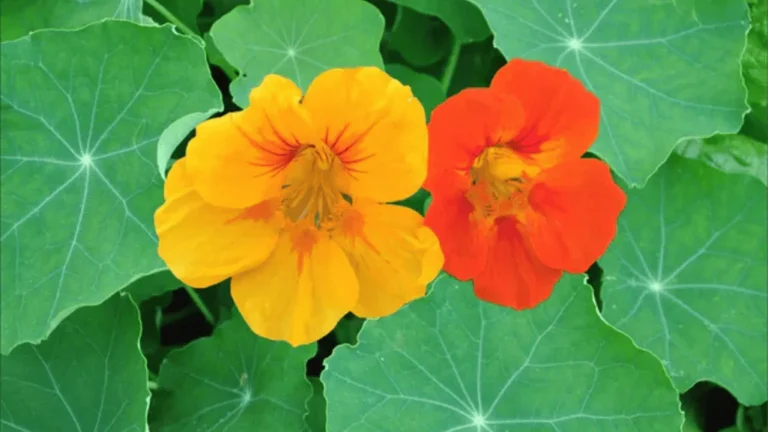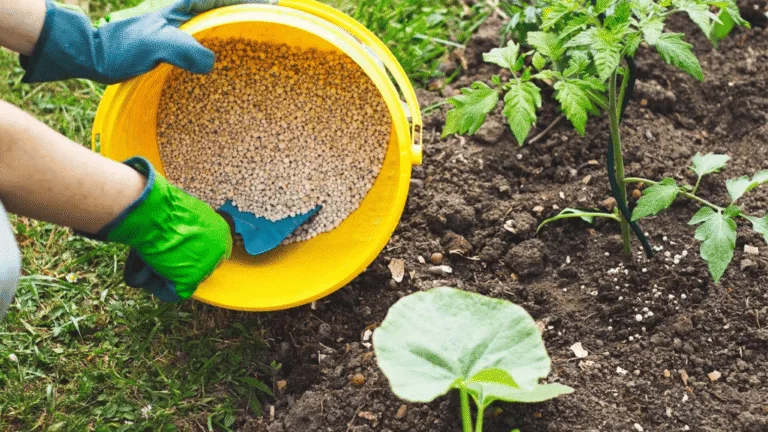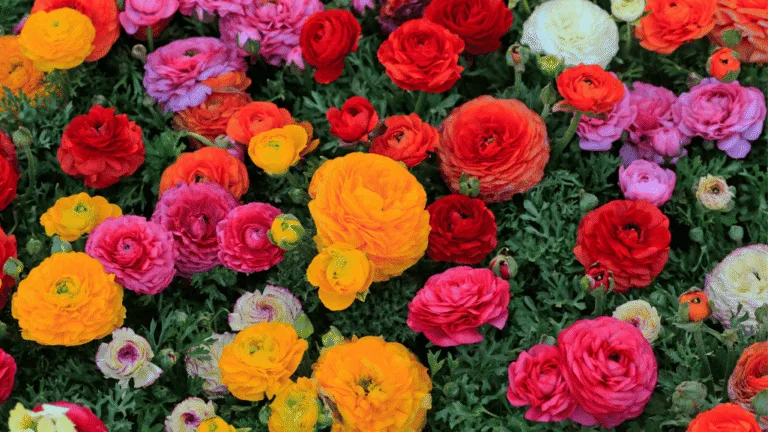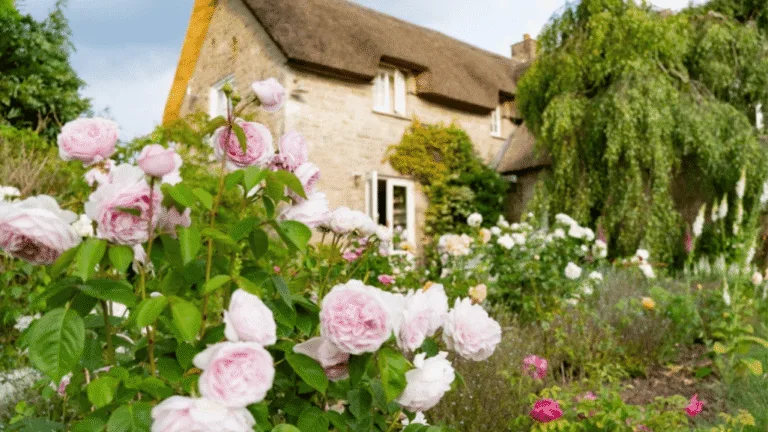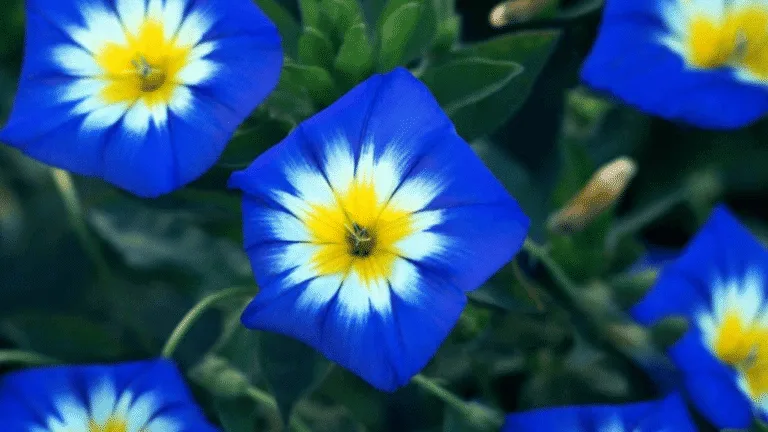Beautiful flowers gardenia Plants For Your homes

Growing fruit trees in small gardens is now popular among urban gardeners. They want to enjoy fresh, homegrown produce. Dwarf fruit trees grafted onto rootstocks limit their size, making it possible to grow many fruits in small spaces.
These compact fruit varieties not only give delicious harvests but also beautify your garden. They attract beneficial pollinators and wildlife.
When picking fruit trees for small gardens, think about their ultimate height and spread. This ensures they won’t grow too big for their space. Many dwarf fruit trees do well in both in-ground plantings and containers.
Container-grown trees are also portable. This means you can move them to safe places during bad weather.
Some top fruit trees for small gardens include apples, peaches, cherries, citrus, and olives. These compact varieties are designed to produce great fruits while staying small. By adding these trees to your urban garden, you can have a backyard orchard with fresh, tasty produce right at your fingertips.
Key Takeaways:
- Dwarf fruit trees are perfect for small gardens and urban spaces
- Compact fruit varieties provide delicious harvests and attract pollinators
- Consider the tree’s mature size when selecting varieties for your garden
- Fruit trees can be grown in the ground or containers for added flexibility
- Apples, peaches, cherries, citrus, and olives are excellent choices for small gardens
The Benefits of Growing Dwarf Fruit Trees in Small Spaces
Growing your own fruit at home is rewarding, but many think they can’t have an orchard because of space. Dwarf fruit trees change that. They’re perfect for small outdoor areas, making them great for space-saving fruit cultivation.
Space-Saving Solutions for Urban Gardeners
Dwarf fruit trees are ideal for city gardeners with little space. They grow up to ten feet tall, but some are just two or three feet. This makes them perfect for small yards, patios, or containers. They help you create a lush urban orchard, even with limited space.
For container growing, use a 15-20 gallon pot with good drainage and soil. For planting in the ground, dig a hole 12-18 inches deep and wide. Keep the grafted joint two inches above the soil. With care like regular watering and pruning, your trees will do well in small spaces.
Enjoying Fresh Fruit from Your Own Backyard
One of the best things about dwarf fruit trees is picking fresh fruit from your backyard. Imagine picking a crisp apple or juicy peach from your tree. Dwarf trees start producing fruit in one to two years, so you can enjoy your harvest sooner than with full-sized trees.
| Fruit Tree | Annual Yield | Time to Maturity |
|---|---|---|
| Dwarf Lemon | 50 lemons | 1-2 years |
| Dwarf Apple | 50-70 apples | 2-3 years |
| Dwarf Nectarine | 40-50 nectarines | 2-3 years |
Dwarf fruit trees need less care than big trees. They’re easy to prune, spray, and harvest. They live for about 15-20 years, giving you years of fresh fruit.
By using dwarf fruit trees, you can turn any small outdoor area into a fruitful and beautiful spot. They’re perfect for city gardeners or anyone wanting to grow their own fruit. Dwarf trees are a convenient and rewarding choice.
Choosing the Right Dwarf Fruit Tree Varieties
When picking dwarf fruit trees for your small garden, think about self-pollination, disease resistance, and climate. The right choices mean a good harvest and less work. This way, you get tasty fruits without much hassle.
Self-Pollinating vs. Cross-Pollinating Trees
It’s key to know if your dwarf fruit trees need another tree to pollinate. Some, like apples and cherries, can pollinate themselves. But, always check if your tree needs a buddy for best fruiting.
Disease-Resistant Cultivars
Choosing trees that fight off diseases is smart for small gardens. These trees need less care and stay healthy. Look for varieties like Liberty apples and Frost nectarines for less maintenance.
Considering Your Climate and Hardiness Zone
Make sure your dwarf fruit trees fit your climate and hardiness zone. Different trees need different temperatures to grow well. Check with local nurseries or extension offices to pick the right fruit tree cultivars for your area.
| Fruit Tree | Common Dwarf Rootstocks | Recommended Varieties |
|---|---|---|
| Apple | M27, M9 | Scrumptious, Red Windsor |
| Pear | Quince Eline, Quince C | Concorde, Doyenne du Comice |
| Cherry | Gisela 5 | Stella, Morello |
| Plum | VVA-1 | Victoria, Opal |
By picking the right dwarf fruit trees, you can have a fruitful and easy-to-care-for garden. Enjoy fresh, delicious fruits for many years.
Top Dwarf Apple Tree Varieties for Small Gardens
Dwarf apple trees are great for small gardens. They grow compactly, perfect for tight spaces, and give lots of tasty apples. Plus, many are disease-resistant, making them easy to care for.
The ‘Honeycrisp’ is a favorite dwarf apple tree. It grows up to 10 feet tall and needs 800 chill hours. It’s good for many climates.
The ‘Cameron Select’ is a smaller version of ‘Honeycrisp’. It’s resistant to fire blight and works well in USDA zones 3-6. It’s ideal for small gardens in cooler areas.
The ‘Leprechaun’ apple tree is very small, staying under 6 feet tall. It still needs 800 chill hours and flowers early. It’s great for small spaces like patios or balconies.
Other notable compact apple varieties include:
- Ambrosia – Reaches 12 feet tall and needs 600 chill hours
- Blushing Delight – A columnar dwarf growing 10 feet tall, requiring 800 chill hours
- Garden Delicious – Self-pollinating, with sweet-tart fruits, needs 600 chill hours, hardy in Zones 4-9
- Golden Sentinel – Grows 10 feet tall, requires 800 chill hours and a midseason pollinator
- Pixie Crunch – Stays under 10 feet tall, needs 800 chill hours and a pollinator companion
- Red Prairie Spy – Grows on semi-dwarf rootstock to 10 feet, ripens in October, requires 800 chill hours
Choosing the right dwarf apple trees for small spaces is key. Look at rootstock, chill hours, and disease resistance. Trees on M27 or M9 rootstocks are perfect for small gardens. Disease-resistant apple trees are also a good choice, as they fight off common diseases.
Dwarf apple trees are extremely hardy and self-fertile, making them a reliable option for small space gardening.
By picking the right dwarf apple tree varieties, you can have a fruitful harvest in your small garden. These small trees offer big flavors and are versatile for eating fresh, baking, and preserving.
Compact Cherry Trees Perfect for Tight Spaces
Dwarf cherry trees are great for small gardens. They are perfect for patios or container gardening. These trees are small and can pollinate themselves, making it easy to grow fruit in tight spaces.
Self-Pollinating Cherry Cultivars
Many dwarf cherry trees pollinate themselves. This means you only need one tree for a big harvest. Some popular self-pollinating cherry cultivars include:
- Stella: A semi-dwarf tree that reaches 10 feet at maturity, producing dark red, sweet cherries.
- Sweetheart: A compact tree with a mature height of 12-15 feet, yielding large, firm, and sweet cherries.
- Morello: A tart cherry variety that is self-fertile and perfect for baking and preserves.
Tart and Sweet Cherry Options
You can choose between tart and sweet cherry trees. Tart cherries are great for baking and juice. Sweet cherries are best for eating fresh.
For small spaces, consider Gisela 5 rootstock. These trees grow 8-12 feet tall. They are easy to care for and harvest.
“Growing compact cherry trees has been a game-changer for my small urban garden. I can now enjoy fresh, delicious cherries without needing a large orchard.” – Sarah, urban gardener
| Cherry Variety | Type | Mature Height | Self-Pollinating |
|---|---|---|---|
| Stella | Sweet | 10 feet | Yes |
| Sweetheart | Sweet | 12-15 feet | Yes |
| Morello | Tart | 8-10 feet | Yes |
| Stardust | Sweet | 12-15 feet | No |
Choosing the right cherry trees for your garden can lead to a big harvest. Whether you like sweet or tart cherries, these trees will add joy to any small space.
Dwarf Citrus Trees: Lemons, Limes, and Oranges
Dwarf citrus trees are perfect for small spaces. They can grow in small yards, on patios, or in containers. Dwarf citrus trees give you fresh fruit and beautiful flowers and leaves.
Choose dwarf Meyer lemons for sweeter fruits. Eureka lemons are also great, priced at $44.00. For lime lovers, try the Kaffir lime for its aromatic leaves.
Growing Citrus Trees in Containers
Dwarf citrus trees grow well in containers. They can move indoors when it gets cold. Make sure the pot is big enough and has holes for water to drain.
They like acidic soil and full sun. This helps them grow fruit faster. With care, they can start producing fruit in 3 to 6 years.
| Dwarf Citrus Tree | Average Price | Noteworthy Characteristics |
|---|---|---|
| Dwarf Meyer Lemon | $41.00 | Rounder, sweeter fruits |
| Eureka Lemon | $44.00 | Classic tart lemon flavor |
| Kaffir Lime | $44.00 | Aromatic leaves for Thai cuisine |
| Calamondin Orange | $41.00 | Ideal for container growing |
Overwintering Citrus Trees Indoors
In cold places, move dwarf citrus trees indoors to avoid frost. Place them in a sunny spot when it gets cold. Keep the room warm, around 60-70°F (15-21°C).
Water less in winter and don’t fertilize until spring. Check for pests or diseases often. With good care, they’ll do well indoors and go back outside when it’s safe.
Undamaged citrus fruits can be stored for 3 to 8 weeks at normal refrigerator temperatures, allowing you to enjoy the fruits of your labor for an extended period.
Adding dwarf citrus trees to your garden or indoor space brings fresh flavors and Mediterranean charm.
Fruit Trees for Small Gardens: Peaches, Plums, and Apricots
Small-space gardeners can grow delicious peaches, plums, and apricots at home. Dwarf peach, plum, and apricot trees are great for small gardens or containers. They offer a lot of fresh, juicy fruit right in your backyard.
When picking dwarf fruit trees for your garden, consider these popular options:
- Bonanza: A dwarf peach tree that produces full-sized, juicy peaches in summer and can be grown in the ground or containers.
- Belle of Georgia: An heirloom dwarf peach tree that produces heavy yields of white fruits with a rose blush when ripe, maturing at 8-10 feet tall.
- Johnson: A dwarf plum tree cultivar that reaches about 10 feet tall and requires a second plum tree of a different variety for pollination.
- Damson: A self-fertile dwarf plum variety ideal for small gardens with room for only one tree.
Plant your trees in a sunny spot with well-drained soil. Most peach and apricot trees don’t need another tree for pollination. But, having another tree nearby can make fruit bigger.
Stone fruit trees such as nectarines, peaches, plums, and apricots can be grown in containers with chill and heat requirements to set fruit and achieve sweetness.
When growing these trees in containers, make sure they get enough water and air. Dwarf trees can start producing fruit quickly, sometimes in the first year.
| Fruit Tree | Self-Pollinating | Mature Height | Container Size |
|---|---|---|---|
| Bonanza Peach | Yes | 6-8 feet | 15-20 gallon |
| Belle of Georgia Peach | Yes | 8-10 feet | 20-25 gallon |
| Johnson Plum | No | 10 feet | 20-25 gallon |
| Damson Plum | Yes | 8-10 feet | 20-25 gallon |
By choosing the right dwarf fruit tree varieties and caring for them, you can enjoy a lot of peaches, plums, and apricots from your small garden or containers.
Exotic Fruit Options: Figs and Pomegranates
Looking to add something special to your small garden? Dwarf fig trees and compact pomegranates are a great choice. They look beautiful and give you tasty, healthy fruits.
Dwarf Fig Varieties for Containerized Growing
Dwarf fig trees like ‘Fignomenal’ and ‘Petite Negra’ are perfect for small spaces. They grow well in containers and produce delicious fruits. These trees do great in tight spaces, making them ideal for small gardens or patios.
Here are some popular dwarf fig tree varieties:
- Brown Turkey: A hardy, reliable variety that produces large, sweet fruits with a rich flavor.
- Black Mission: Known for its dark, purplish-black skin and sweet, jammy flesh.
- Panache: A striking variety with green and yellow striped skin and a sweet, raspberry-like flavor.
Compact Pomegranate Shrubs
Pomegranates are full of antioxidants and nutrients. Compact varieties like ‘Nana’ and ‘State Fair’ grow only 2-4 feet tall and wide. They look great with their vibrant flowers and edible fruits.
| Variety | Mature Height | Fruit Characteristics |
|---|---|---|
| Wonderful Pomegranate | 8-12 feet | Large, deep red fruits with sweet-tart arils |
| Eversweet Pomegranate | 8-10 feet | Medium-sized fruits with light pink, sweet arils |
| Parfianka | 6-8 feet | Large, bright red fruits with sweet, juicy arils |
Pomegranates are self-pollinating and grow well in zones 7-10. They add beauty to any small garden with their foliage, flowers, and fruits.
Growing exotic fruit trees in small spaces is incredibly rewarding. Not only do they add a unique flavor to your garden, but they also provide healthy, delicious fruits right at your fingertips.
Don’t miss out on exotic fruit trees like dwarf figs and compact pomegranates for your small garden. They’re perfect for small spaces and let you enjoy exotic flavors without losing garden space.
Maximizing Your Small Garden Space with Espalier Fruit Trees
Espalier fruit trees are a creative way to make the most of small gardens. They grow flat against walls or fences, turning unused space into living walls. This method lets even tiny gardens grow a variety of fruits, like apples, pears, plums, and cherries.
More gardeners are choosing espalier fruit trees. They want to grow more fruit in less space. Now, people buy fruit trees in sets of 6 or 10, not just one. This shows a growing interest in making the most of small outdoor areas.
Creating Living Walls with Trained Fruit Trees
Espalier techniques train fruit trees to grow flat against walls or fences. This creates beautiful living walls that also produce fruit. Apples and pears work well because they grow well when pruned into shapes.
Choosing the right fruit tree for your climate is key. For example, grapes and Asian pears do well in certain areas. This ensures your espalier project will succeed.
Espalier Techniques for Various Fruit Tree Species
Not just apples and pears can be espaliered. Stone fruits like plums and cherries are better for fan-training. Dwarf fig trees are also great for espalier, especially in containers.
Citrus trees, like lemons and oranges, can also be espaliered. This is great for growing them in cooler places. The Meyer lemon tree is a good choice for espalier because it’s small and easy to prune.
| Fruit Tree | Espalier Technique | Optimal Pruning Time |
|---|---|---|
| Apples | Formal shapes (horizontal or Belgian fence) | January or February |
| Pears | Formal shapes (horizontal or Belgian fence) | January or February |
| Plums & Cherries | Fan-training | Minimal pruning to avoid disease |
| Figs | Fan-training or informal espalier | Late winter or early spring |
| Citrus | Informal espalier | As needed to maintain shape |
Pruning espaliered fruit trees needs the right tools and techniques. Prune twice a year to keep the tree’s shape and promote fruit. Clean cuts help the tree heal and grow well.
For those short on time, ready-espaliered trees are available. They’re more expensive but offer an instant look. They’re great for those new to espalier training.
By using espalier techniques and picking the right trees, you can turn a small garden into a beautiful and fruitful space. Check out zone-specific planting guides and other resources for success with vertical fruit growing.
Conclusion: Enjoying a Bountiful Fruit Harvest in Your Small Garden
Compact fruit trees are a great choice for city gardeners. They let you grow a variety of fruits like apples, peaches, figs, and cherries. These trees not only give you fresh, organic food but also make your garden look beautiful with their flowers and leaves.
Choosing the right trees for your area and using smart growing tips can make your garden thrive. You can grow trees in the ground or in pots on your patio. Dwarf fruit trees make harvesting your own fruit a joy. Start your urban gardening journey by picking the right trees, pruning them well, and keeping them watered and fed.
Compact fruit tree care can make your backyard a fruit paradise. With hard work and a love for growing your own food, your small garden can be a treasure trove of fruits. So, get your gardening tools ready and enjoy the fruits of your labor. For more gardening tips and ideas, check out Flowers Gardenia and see how to make your garden beautiful and fruitful, no matter its size.






